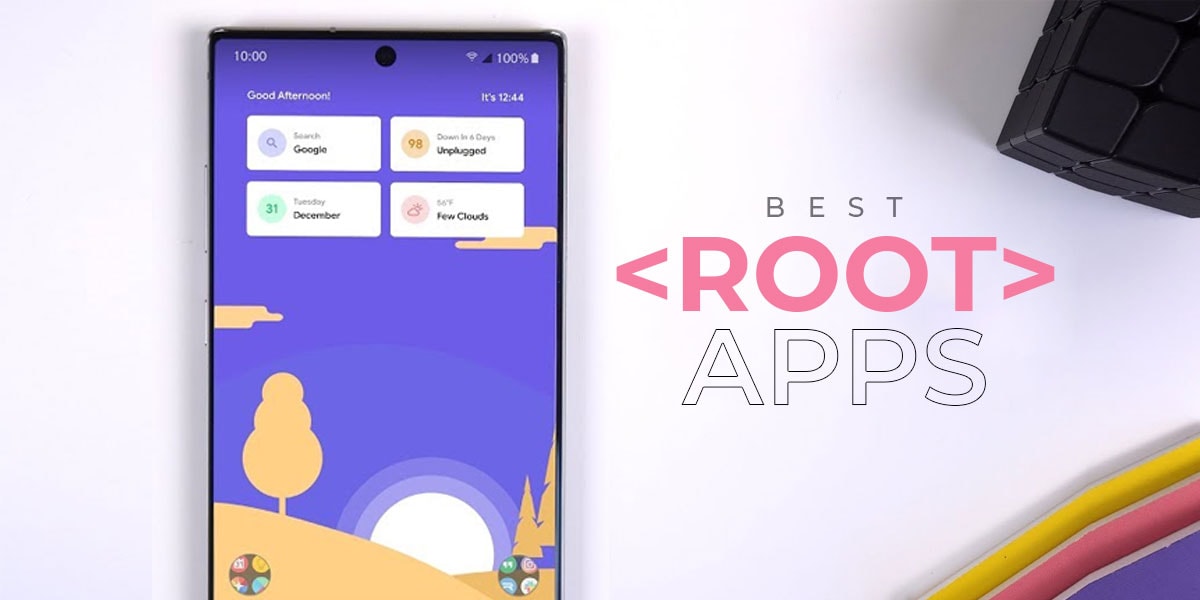

Immediately expectable advantages of rooted devices include the following: As a superuser has access to the device's system files, all aspects of the operating system can be customized with the only real limitation being the level of coding expertise. AdvantagesĪdvantages of rooting include the possibility for complete control over the appearance, feel, and behaviour of the device.
BEST ROOT APPLICATIONS FOR ANDROID ANDROID
Rooting an Android phone lets the owner add, edit or delete system files, which in turn lets them perform various tweaks and use apps that require root access. Access to alternate apps may require rooting but rooting is not always necessary. Other vendors of Android devices may look to other sources in the future. Īs of 2011, the Amazon Kindle Fire defaults to the Amazon Appstore instead of Google Play, though like most other Android devices, Kindle Fire allows sideloading of applications from unknown sources, and the "easy installer" application on the Amazon Appstore makes this easy. However, some US carriers, including AT&T, prevented the installation of applications not on the Play Store in firmware, although several devices are not subject to this rule, including the Samsung Infuse 4G AT&T lifted the restriction on most devices by the middle of 2011. The Android OS supports this feature natively in two ways: through the "Unknown sources" option in the Settings menu and through the Android Debug Bridge. In contrast to iOS jailbreaking, rooting is not needed to run applications distributed outside of the Google Play Store, sometimes called sideloading.

A secondary operation, unlocking the device's bootloader verification, is required to remove or replace the installed operating system. Rooting is required for more advanced and potentially dangerous operations including modifying or deleting system files, removing pre-installed applications, and low-level access to the hardware itself (rebooting, controlling status lights, or recalibrating touch inputs.) A typical rooting installation also installs the Superuser application, which supervises applications that are granted root or superuser rights by requesting approval from the user before granting said permissions. Rooting lets all user-installed applications run privileged commands typically unavailable to the devices in the stock configuration.
BEST ROOT APPLICATIONS FOR ANDROID INSTALL
The former allows removing the SIM lock on a phone, while the latter allows rewriting the phone's boot partition (for example, to install or replace the operating system). Rooting is distinct from SIM unlocking and bootloader unlocking. Thus, it is primarily the third aspect of iOS jailbreaking (giving users administrative privileges) that most directly correlates to Android rooting. Similarly, the ability to sideload applications is typically permissible on Android devices without root permissions. Many vendors such as HTC, Sony, LG, Asus, Xiaomi and Google explicitly provide the ability to unlock devices, and even replace the operating system entirely. However, these are different concepts: Jailbreaking is the bypass of several types of Apple prohibitions for the end user, including modifying the operating system (enforced by a "locked bootloader"), installing non-officially approved (not available on the App Store) applications via sideloading, and granting the user elevated administration-level privileges (rooting). Root access is sometimes compared to jailbreaking devices running the Apple iOS operating system. On some devices, rooting can also facilitate the complete removal and replacement of the device's operating system, usually with a more recent release of its current operating system. Thus, rooting gives the ability (or permission) to alter or replace system applications and settings, run specialized applications ("apps") that require administrator-level permissions or perform other operations that are otherwise inaccessible to a normal Android user. Rooting is often performed with the goal of overcoming limitations that carriers and hardware manufacturers put on some devices. As Android is based on a modified version of the Linux kernel, rooting an Android device gives similar access to administrative ( superuser) permissions as on Linux or any other Unix-like operating system such as FreeBSD or macOS. Rooting is the process of allowing users of the Android mobile operating system to attain privileged control (known as root access) over various Android subsystems. Screenshot of the "Root Verifier" app on a rooted Samsung Galaxy S10e


 0 kommentar(er)
0 kommentar(er)
